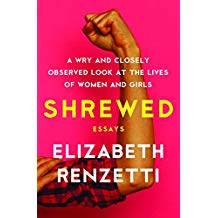At the Halifax library you can borrow the DVD Therese Desqueyroux (with English subtitles). The back of the case says something about the early 20th century heroine (the exquisite Audrey Tatou) who lives in a stultifying marriage of convenience, in the lovely French countryside near Bordeaux. But the film in itself is rather slow and a bit too meticulous — as befits the lead’s role. Somehow Therese morphs from an exciting and somewhat adventurous teenager to a drawn nearly catatonic wife. There are some rather scary twists and turns and her relationships deteriorate quickly. Watch the trailer here. I guess it is a French psychological thriller… 
Over the holidays, like many of you, I watched “Roma” on Netflix. A brilliantly made film, it has excellent  acting and
acting and the men virtually disappear behind strong female roles. The review by Heather Mallick at the Toronto Star is good, and thoughtful — and I think her perceptions are right on.
the men virtually disappear behind strong female roles. The review by Heather Mallick at the Toronto Star is good, and thoughtful — and I think her perceptions are right on.  (left) Healther Mallick.
(left) Healther Mallick.
Some of you who have seen it, say the Mexico City of the early 1970s which is portrayed in the film seems like a kinder, gentler city than the drug-ridden, violent city we hear about today. That is us white folk speaking nostalgically. And I’m not sure the city was the delightful, playground shown in parts of the film except for the upper middle class. I have heard of a similar ‘quest for comfort’ in the 28 year old American film Fried Green Tomatoes.  — The idea in Fried Green Tomatoes is that the southern US between World War I and WWII was kinder and gentler and somehow more wholesome than we have been led to believe. Relations with Blacks, the racism which led to many. many lynchings are air-brushed out of the film. The story focuses on good white people who gave to their communities. There were ups and downs — a few deaths and even a murder but all’s well that ends well… The message is one of comfort.
— The idea in Fried Green Tomatoes is that the southern US between World War I and WWII was kinder and gentler and somehow more wholesome than we have been led to believe. Relations with Blacks, the racism which led to many. many lynchings are air-brushed out of the film. The story focuses on good white people who gave to their communities. There were ups and downs — a few deaths and even a murder but all’s well that ends well… The message is one of comfort.
Of course Roma does bite back in a way few American films ever dream of. Another Mexican director’s film did bite back. The 2006 film Babel  directed by Alejandro Gonzalez Inarritu is really 4 stories, loosely interconnected– not exactly in the same time frame. One story takes place in Morocco, one in Japan and one in a US border city near Mexico. This too is a film well worth seeing. In ’06, it was nominated for the Palm D’Or prize at Cannes, where the director won Best Director.
directed by Alejandro Gonzalez Inarritu is really 4 stories, loosely interconnected– not exactly in the same time frame. One story takes place in Morocco, one in Japan and one in a US border city near Mexico. This too is a film well worth seeing. In ’06, it was nominated for the Palm D’Or prize at Cannes, where the director won Best Director.
As for what to read — Shrewed, Essays by Elizabeth Renzetti is excellent. Renzetti is a columnist for the Globe and Mail.  Her essays are funny, witty and a close-up view of girls and women from a staunchly feminist perspective. Her experiences as a freelancer in Toronto, Los Angeles and London show a lot about women and what women have to do to be taken as serious journalists. She interviewed Germaine Greer, PD James and others and what she takes from the meetings will surprise you. Her description of her Italian-Canadian heritage, and her childhood in Toronto is at time hard to read. An excellent and delightful book.
Her essays are funny, witty and a close-up view of girls and women from a staunchly feminist perspective. Her experiences as a freelancer in Toronto, Los Angeles and London show a lot about women and what women have to do to be taken as serious journalists. She interviewed Germaine Greer, PD James and others and what she takes from the meetings will surprise you. Her description of her Italian-Canadian heritage, and her childhood in Toronto is at time hard to read. An excellent and delightful book.
As for fiction, do read  Night Gaunts and Other Tales of Suspense by Joyce Carol Oates, who I think is one of the best fiction writers in the US today. Among the 6 short pieces of fiction in the book my favourite is “The Experimental Subject” — any feminist will recognize herself somewhere in this story. A story that is fantastical yet all too believable. “The Long-Legged Girl” is a delight. In both stories ageing white male academics get their comeuppance and maybe that is the why I liked the two stories so much.
Night Gaunts and Other Tales of Suspense by Joyce Carol Oates, who I think is one of the best fiction writers in the US today. Among the 6 short pieces of fiction in the book my favourite is “The Experimental Subject” — any feminist will recognize herself somewhere in this story. A story that is fantastical yet all too believable. “The Long-Legged Girl” is a delight. In both stories ageing white male academics get their comeuppance and maybe that is the why I liked the two stories so much.
